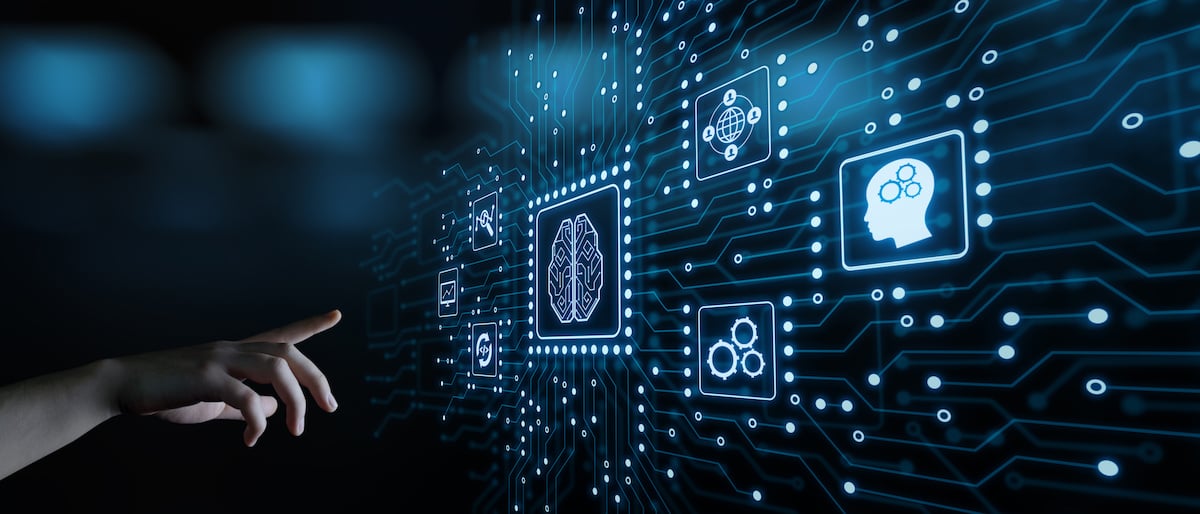How to Manage the Complexity of SecOps in the Age of AI
Introduction
Cyber attacks are becoming more frequent, more sophisticated, and more damaging. When you factor in that IT and SecOps teams are experiencing a significant skills shortage, it’s evident that the time has come to reevaluate cybersecurity strategies that rely primarily on human intervention.
Today’s IT environments are increasingly complex. As a result, they are becoming more difficult to defend when (not if) an attack occurs, and they will only become more vulnerable unless security teams harness the power of artificial intelligence (AI) to combat existing and emerging cyber threats.
AI has the potential to alleviate key security and operational challenges, including reducing IT complexity, bridging the growing skill gap, and increasing security. However, AI also comes with its own set of risks and drawbacks.
Let’s explore the role of AI in SecOps and take a closer look at how it acts as both an agent of positive change and a source of complexity and risk.
The Modern SOC: How to Leverage AI-Based SecOps and Quantify the Value of Cybersecurity
Fill out the form below to download The Modern SOC Whitepaper.
.png?width=786&name=The%20Modern%20SOC%20cover%20(2).png)
How AI Reduces SecOps Complexity and Increases Security
Risks and Limitations of AI in Security
How Hackers Use AI
The Future of AI in Cybersecurity
How an MSP Can Help You Harness the Power of AI for Security
Learn More About AI and Security

How AI Reduces SecOps Complexity and Increases Security
Between huge volumes of data from disparate sources that need to be processed, stored, and secured to a widely distributed workforce that needs secure access to the company network and applications, your SecOps team has a complexity problem, especially when it comes to maintaining your security posture.
AI is emerging as a solution to the rapidly growing cybersecurity needs of today’s businesses. And although it doesn’t replace the humans on your security team, the technology does augment your team’s skill sets, improve efficiency, and increase data processing capabilities, all of which contribute to a robust cybersecurity strategy.
Here are a few of the most impactful ways AI and machine learning contribute to and streamline your organization’s security profile.
Threat Hunting
Threat hunting, or searching for malicious entities within your network, is a critical element of a cybersecurity strategy. It is also almost impossible to do manually.
One of the primary benefits of adding AI to your cybersecurity toolbox is its ability to process massive amounts of data quickly and flag potential threats. Although there is some risk of false positives, with input from humans and the right size data sets, AI can learn from its mistakes and significantly increase accuracy.
Logically’s SentryXDR platform is an excellent example of how security teams can apply AI and machine learning to proactively search for threats and respond quickly to minimize damage.
Unlike the human brain, Logically’s platform can easily process thousands of information sources in a short amount of time to identify potential risks to the business and alert the security team of legitimate threats. In one example, SentryXDR was able to process more than 20.5 million events and 212,000 threat indicators, which returned five open critical and major alerts.
Vulnerability Management
Vulnerability management is the ongoing process of identifying, reporting, and remediating vulnerabilities in your systems, networks, and endpoints.
The problem with traditional, signature-based vulnerability management is that it uses a database of known threats to analyze incoming traffic. When a match occurs, the vulnerability management system quarantines and neutralizes the threat, but it doesn’t defend against unknown and emerging threats or modified signatures.
AI solves this and streamlines vulnerability management processes using entity behavior analysis to detect and block both new and unknown threats. AI and machine learning algorithms analyze and learn the everyday baseline behavior across users, endpoints, workflows, and servers so they can identify and respond to suspicious behavior that might indicate an attack.
One use case for AI-based vulnerability management is monitoring the service tickets coming into your Help Desk. Because it works from a baseline of “normal” traffic, AI can quickly identify patterns of concern, such as multiple tickets for the same issue (i.e., a potential threat), that the engineer might miss if they are clearing tickets one at a time.
Network Security
Remote workers, legacy systems, decentralized networks, and evolving cyber threats all contribute to widening attack surfaces that make it harder than ever to secure your network. Manual monitoring, analysis, and remediation are time-consuming and fairly ineffective in today’s threat landscape.
AI and machine learning, however, are ideal for detecting and preventing cyber threats targeting your network.
Algorithms identify baseline traffic patterns in your network, then continuously monitor and analyze for anomalies and suspicious patterns that could indicate a potential threat.
And because AI can learn and adapt based on new information and data sets, the accuracy of the algorithms will improve over time.
Increased Efficiency
Security analysts are an essential part of your SecOps strategy, but human beings have limitations and weaknesses.
AI can help minimize the impact of these limitations on your security posture.
For example, AI can take over many of the repetitive, time-consuming tasks that decrease productivity so your IT team members are free to work on high-value, strategic initiatives.
AI also reduces the team’s exposure to the noise generated by continuous threat monitoring and alleviates alert fatigue. This is significant because the human brain gets trained into habitual things, and hackers know this.
Think about how we are all trained to reflexively respond to multi-factor authentication push notifications. Now think about what could happen if a threat actor compromises your debit card credentials.
You get a push notification on your phone, and because you're programmed to press “accept” without thinking, you essentially just handed the hacker the contents of your bank account.
AI eliminates this type of risk because it doesn't get programmed into habits.
Elevated Skill Sets
Skilled workers are hard to find in almost every industry—from construction to e-commerce—and cybersecurity is no exception. There is a significant shortage of experienced cybersecurity professionals available to hire, leaving many organizations vulnerable to attack.
AI helps bridge the skills gap by not only providing threat monitoring and vulnerability management, but also by elevating and extending your IT team’s knowledge base.
AI and machine learning algorithms can research, analyze, and apply relevant knowledge and information faster and more efficiently than humans. This knowledge can then be used to augment existing skills on your IT team.
For example, a level one SOC engineer can tap into the AI knowledge base and use that information to apply higher-level skills and improve the business’s security posture.
AI language models can also elevate existing skills by allowing security teams to query using natural language rather than having to know advanced query languages. This technology is still evolving, but we expect natural language models to be widespread in the near future.

Risks and Limitations of AI in Security
Although AI has many powerful applications in cybersecurity, it’s also important to consider the risks and challenges inherent in the technology.
Scarce Resources
Many organizations struggle to find the staff and budget to implement all the cybersecurity initiatives they need, and AI requires plenty of both.
The cost of setting up and maintaining AI technology as part of your cybersecurity strategy requires investing in hardware and software resources, additional computing power, memory, backup, and training models.
Then there are the people costs. Implementing and maintaining AI technology requires technical expertise, including data scientists, machine learning engineers, and software developers. If you don’t have the resources (or the desire) to hire full-time employees to fill these roles, partnering with a managed service provider (MSP) can provide access to skilled AI technology professionals.
Inadequate Data Sets
Your AI and machine learning algorithms are only as good as the data sets used to train them. Poor quality or a low number of data sets will impact your AI models’ ability to recognize and neutralize cyber threats.
It isn’t always easy (or affordable) to obtain a large number of high-quality data sets, but if you don’t train your AI to recognize an adequate amount of malicious code, malware, and other anomalies—and regularly introduce new threats—your business is at risk.
Unintentional Bias
Because humans control the data that AI models use to learn how to detect and respond to threats, there will always be some level of bias inadvertently introduced into the system.
Although unintentional, when bias is built into the algorithm, security teams will experience higher rates of false positives, undetected threats, and other inaccuracies that increase vulnerabilities and risk.
Data Privacy and Security
Training AI models often requires the use of sensitive personal data, meaning there is always a risk that customer, employee, or confidential company data will be compromised, stolen, exposed, or misused.
To prevent potential compliance, legal, and ethical ramifications, security teams are challenged with implementing and enforcing stringent security policies to protect data while still making it accessible to AI and creating a strong security profile.

How Hackers Use AI
For every security team using AI to prevent cyberattacks, there are hackers working around the clock to train AI to circumvent those defenses.
In many ways, AI has given threat actors superpowers.
More Realistic Scams
ChatGPT allows hackers to create more effective campaigns by improving the quality of their phishing emails (a former telltale sign of a phishing attempt).
By using AI to mimic the tone and messaging of a legitimate business, it’s almost impossible to tell the difference between a real and a fraudulent email or text from your bank or other trusted organization.
Polymorphic Code
Hackers are employing polymorphic code technology to adapt their malware’s signature.
Because the code changes constantly, polymorphic malware can slip through undetected by traditional, signature-based antivirus software. However, behavior-based cybersecurity solutions can stop it.
Warp-Speed Code Cycles
One of the most impactful ways AI has enabled hackers is by speeding up code development.
Because AI can process massive amounts of data in a short amount of time, AI can launch an attack, use machine learning to make adjustments to the algorithm based on failure data and newly identified vulnerabilities, and relaunch the attack over and over and over again.

The Future of AI in Cybersecurity
We have only scratched the surface of what is possible with AI, but one thing is already certain: Cyberattacks will continue to evolve, and fighting back with AI is the only way we will be able to pivot fast enough to keep up with emerging threats.
Looking ahead, we can expect to see AI’s usefulness increase in several key areas:
Automated Threat Remediation
AI is already being used to detect threats, raise the alarm, and quarantine malicious programs. But in the future, AI will extend these capabilities with self-healing networks that will allow organizations to increase their security profiles.
Self-healing AI technology will have the ability to identify a threat, isolate the affected systems, neutralize the threat, then repair the damage—all without human intervention.
Predict Potential Threats or Vulnerabilities
AI helps organizations detect threats and implement proactive security measures, but today’s technology is most effective against known threats.
AI developers are working on systems that will be able to analyze historical data, trends, and patterns to anticipate unknown threats and launch a counteroffensive before an attack occurs.
Large Language Models
ChatGPT and other AI tools already offer some level of natural language processing. However, the use of large language models in AI is set to expand significantly.
As more industries find ways to incorporate AI into their day-to-day operations, AI tools will have to support natural language queries. From a SecOps perspective, expanding the capabilities of large language models will make it easier to initiate and target threat hunting and vulnerability management workflows.
Convergence of AI and Human Intelligence
Although AI can do a lot of things faster and more efficiently than its human counterparts, it’s unlikely that AI will ever eliminate the need for human involvement in cybersecurity.
Human expertise, leadership, and even empathy are needed for strategic decision-making and AI system management. However, although AI won’t replace humans on the security team, team members will need to grow and adapt their skills and expertise to keep up with the changing technology.

How an MSP Can Help You Harness the Power of AI for Security
Many organizations rely on a managed service provider to support and manage their IT infrastructure. But as AI becomes more ingrained in both day-to-day IT functions and cybersecurity, partnering with an MSP that has deep knowledge of the security space is critical.
The right MSP can improve your organization’s security posture in several ways:
Provide expertise and support in implementing and managing systems.
Few businesses have a dedicated cybersecurity expert on staff or the time and resources to train the IT team on rapidly evolving AI security solutions.
An MSP can bridge that critical skills gap by providing a specialist who is experienced in the latest cybersecurity technologies and knows how to implement AI and machine learning most effectively in your environment.
Ensure data security, compliance, and privacy.
Data security is a huge concern as hackers increase the frequency and severity of their attacks and compliance regulations become more strict (and penalties more expensive).
Your MSP can use AI to detect and respond to threats quickly, minimizing the opportunities to compromise your customer and business data.
Identify and integrate the right solutions for your organization.
Cybersecurity is not one size fits all. You need a strategy that addresses your organization’s biggest vulnerabilities and common threats.
A comprehensive security assessment conducted by a trained and certified specialist can identify risks and suggest short- and long-term solutions to close security gaps before it’s too late.

Learn More About AI and Security
Thanks to AI, cyber threats are evolving at a rapid pace. As a result, traditional security strategies may not be able to protect organizations from cyberattacks.
AI is emerging as an effective and powerful tool against cyber threats because of its ability to proactively defend against known threats and unexpected patterns and adapt and learn every time a new threat is detected.
Want to learn more about the role AI plays in cybersecurity across organizations? Download The Modern SOC - How to Leverage AI-Based SecOps and Quantify the Value of Cybersecurity.
The Modern SOC:
How to Leverage AI-Based SecOps and Quantify the Value of Cybersecurity
.png?width=786&name=The%20Modern%20SOC%20cover%20(2).png)



/Upgrading%20firewalls-1.jpeg?width=1200&height=685&name=Upgrading%20firewalls-1.jpeg)






